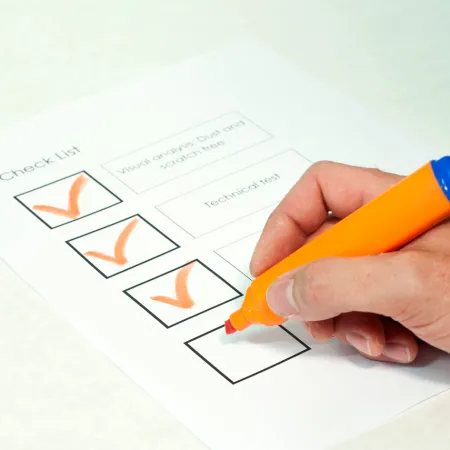Protecting Schools is Our Purpose!
2025 School Safety Assessment Checklist for Administrators

FSDAVCFEBFEVSDDVFSD

FSDAVCFEBFEVSDDVFSD

FSDAVCFEBFEVSDDVFSD
School Safety Guidance and Insights
Why Annual Safety Reviews Are Critical

Active-shooter incidents, fires, and severe weather dominated headlines in 2024, proving that risk often evolves faster than school budgets. Even a faulty door latch or outdated intercom system can put hundreds of students at risk. Safety isn’t just about big upgrades—it’s about spotting small problems before they become emergencies.
Many states now tie funding and liability protections to safety audit results. Waiting to act can raise insurance costs and erode public trust. Annual reviews help convert concerns into measurable tasks. Auditors identify physical, procedural, and training gaps, ranking them by urgency. With this data, leaders can justify repairs, apply for grants, and show that safety is more than a promise.
Reviews also support compliance with national K–12 standards, board accountability, and community expectations. Quick action proves that school safety is an ongoing process—not just a reaction to headlines.

Core Elements of a Complete Safety Checklist
Start with the campus perimeter. Verify that exterior doors close fully and lock from the outside without requiring a key to exit. Inspect window glazing, lighting, and surveillance camera angles to identify blind spots. Document any malfunctioning hardware in the school safety assessment checklist so maintenance crews and budget planners can prioritize fixes. When doors, locks, or lights fail, they create easy targets and weaken every other layer of protection.
Next review procedural safeguards. A strong visitor management system checks government-issued IDs, prints time-stamped badges, and screens against custody restrictions or offender databases. Evaluate reunification plans to confirm that students can be released quickly and safely during an emergency. Cross-reference your active shooter preparedness checklist with fire safety in schools requirements to catch conflicts, such as blocked egress routes caused by temporary barricades or poorly placed furniture.
Round out the checklist with communication tools. Confirm that intercoms, radios, and mass-notification apps reach every classroom and outdoor area. Verify backup power for critical devices and update contact lists in the emergency operations plan schools database. Export your findings into a unified report so the campus risk assessment feeds grants and capital plans, turning observations into funded projects for the coming year.
Adding Technology to Strengthen Assessments

Modern safety technology closes gaps that human monitoring cannot. AI-enabled cameras flag loitering or perimeter breaches in real time, sending alerts to administrators and school resource officers. These systems add extra eyes without expanding payroll, giving staff critical seconds to verify and respond.
Silent panic-alert badges provide a discreet way for teachers to request assistance when a situation escalates. Once activated, the badge shares live location data with the front office and local responders, trimming response time compared with calling 911 or paging through an intercom.
Digital floor-plan mapping syncs with mass-notification apps, allowing incident commanders to lock doors remotely and guide evacuations using real-time data. When evaluating vendors, confirm FERPA safeguards, encryption standards, and grant eligibility. Pilot new systems in one wing, gather feedback, then expand district-wide only after clear policy adoption and documentation.
Modern safety technology closes gaps that human monitoring cannot. AI-enabled cameras flag loitering or perimeter breaches in real time, sending alerts to administrators and school resource officers. These systems add extra eyes without expanding payroll, giving staff critical seconds to verify and respond.
Silent panic-alert badges provide a discreet way for teachers to request assistance when a situation escalates. Once activated, the badge shares live location data with the front office and local responders, trimming response time compared with calling 911 or paging through an intercom.
Digital floor-plan mapping syncs with mass-notification apps, allowing incident commanders to lock doors remotely and guide evacuations using real-time data. When evaluating vendors, confirm FERPA safeguards, encryption standards, and grant eligibility. Pilot new systems in one wing, gather feedback, then expand district-wide only after clear policy adoption and documentation.

Before investing district funds, test the chosen technology in a single building. This controlled rollout allows teams to adjust network settings, refine alert protocols, and observe how students react. Early data reveal whether the system produces false alarms or strains bandwidth, saving time and money that might be lost in a hasty district-wide deployment.
Financing options extend beyond the general fund. Public-safety partners may share camera feeds in exchange for installation support, while Homeland Security grants cover panic-alert infrastructure for high-risk campuses. Some vendors offer subscription models that bundle equipment, software, and maintenance into one predictable fee, easing capital constraints. Regardless of funding path, technology succeeds only when paired with regular drills, updated procedures, and clearly posted expectations. Administrators should publish training schedules, collect sign-offs, and revisit policies each semester to confirm that tools remain aligned with evolving threats. Annual reviews confirm effectiveness and qualify systems for renewal grant cycles.
Building Effective Behavioral Threat Assessment Teams
Behavioral threat assessment teams work because they draw insight from multiple perspectives. A counselor recognizes emotional shifts, a teacher notes attendance dips, and a school resource officer interprets concerning social media posts. By meeting weekly, the team pools observations into a single timeline, rating each case on intent, capability, and access to weapons. Early, documented discussions help redirect a student long before discipline or arrest becomes necessary.
A solid checklist examines whether the team includes mental-health professionals, administrators, security staff, and community liaisons. It also checks for written protocols defining prohibited versus concerning behaviors, intake processes, and record-keeping standards. Regular training keeps members current on federal models such as the National Threat Assessment Center’s pathway to violence framework, so personal biases do not overshadow structured, research-based, sound decision making.
Effective teams track interventions through a confidential case-management system. Each entry notes observed behavior, support actions taken, parent contact, and follow-up dates. This audit trail not only guides future meetings but also demonstrates due diligence if questions arise later. Administrators should set key performance indicators such as average time from tip to first meeting, closure rates, and recidivism counts, then publicly share anonymized metrics with the board to validate program impact.
Conducting Drills and Training for Staff and Students
Drills translate policy into practice. State guidelines for 2025 generally call for monthly fire drills and at least two lockdown exercises each term. Use varied times and scenarios so staff react from different starting points, accurately capturing realistic data on movement speed and communication clarity.
During each exercise, assess whether classroom doors locked quickly, students followed evacuation routes, and radio traffic remained orderly. Observers should note any confusion over code words or assembly areas. Collect feedback immediately, while memories are fresh, to refine instructions and correct misconceptions before the next event.
Afterward, update sheets in the campus risk assessment database, tagging items by type and urgency. Revisit gaps during meetings so everyone understands changes. Transparent reporting builds confidence, showing families that drills are purposeful, not performative, and that each iteration moves the school toward readiness.

Invite local police, fire, and emergency medical personnel to observe at least one drill each semester. Their outside perspective catches overlooked details, such as a staging area that blocks ambulance access or a door numbering system that confuses responding officers. Joint debriefs also build relationships so first responders fully understand campus layouts and culture before a real crisis forces split-second decisions.
Maintain a living log that records the date, scenario, performance notes, and corrective actions for every exercise. Link the log to the emergency operations plan so future auditors can see a clear improvement cycle. Assign each action item to a staff member with a deadline, then track completion status in your cloud dashboard. Sharing progress reports with parents and students fosters ownership and reduces anxiety because everyone sees that feedback leads to tangible upgrades in equipment, procedures, and practice frequency, and demonstrates the district’s commitment to campus safety excellence.
Keeping Safety Plans Current Throughout 2026
Once the checklist and emergency operations plan are updated, schedule quarterly walk-throughs with custodians, department heads, and student leaders. These informal reviews catch small problems—such as blocked exit signs or depleted medical kits—before they grow. Upload photos of each finding to the dashboard, assign owners, and set reminder dates so progress does not stall amid day-to-day academic pressures.
Transparency strengthens accountability. Post a summary of completed actions on the district website and highlight upcoming projects in staff bulletins. Parents and community partners appreciate visibility into safety investments and may donate supplies or volunteer time when they see clear goals. Public updates also satisfy insurance carriers who increasingly require documented mitigation steps to maintain favorable premiums.
Set calendar alerts to revisit the emergency operations plan each summer, incorporating lessons from the year’s drills, any new construction, and legislative changes. Archive every version with a timestamp to create an auditable history that protects the district during legal reviews. Finally, survey staff and students after each semester, asking how safe they feel and whether procedures make sense. Quantitative scores and written comments guide future updates, keeping the plan a living document that evolves with risks and resources.
Have Questions About What We Offer?
To learn more about our services, contact us today!
Have Questions About What We Offer?
Contact us to learn more about our services
Quick Links
Hours of Operation
Mon - Fri | 9:00 AM - 5:00 PM
Sat - Sun | Closed

©2025 American Priority Project | All Rights Reserved | Privacy Policy

